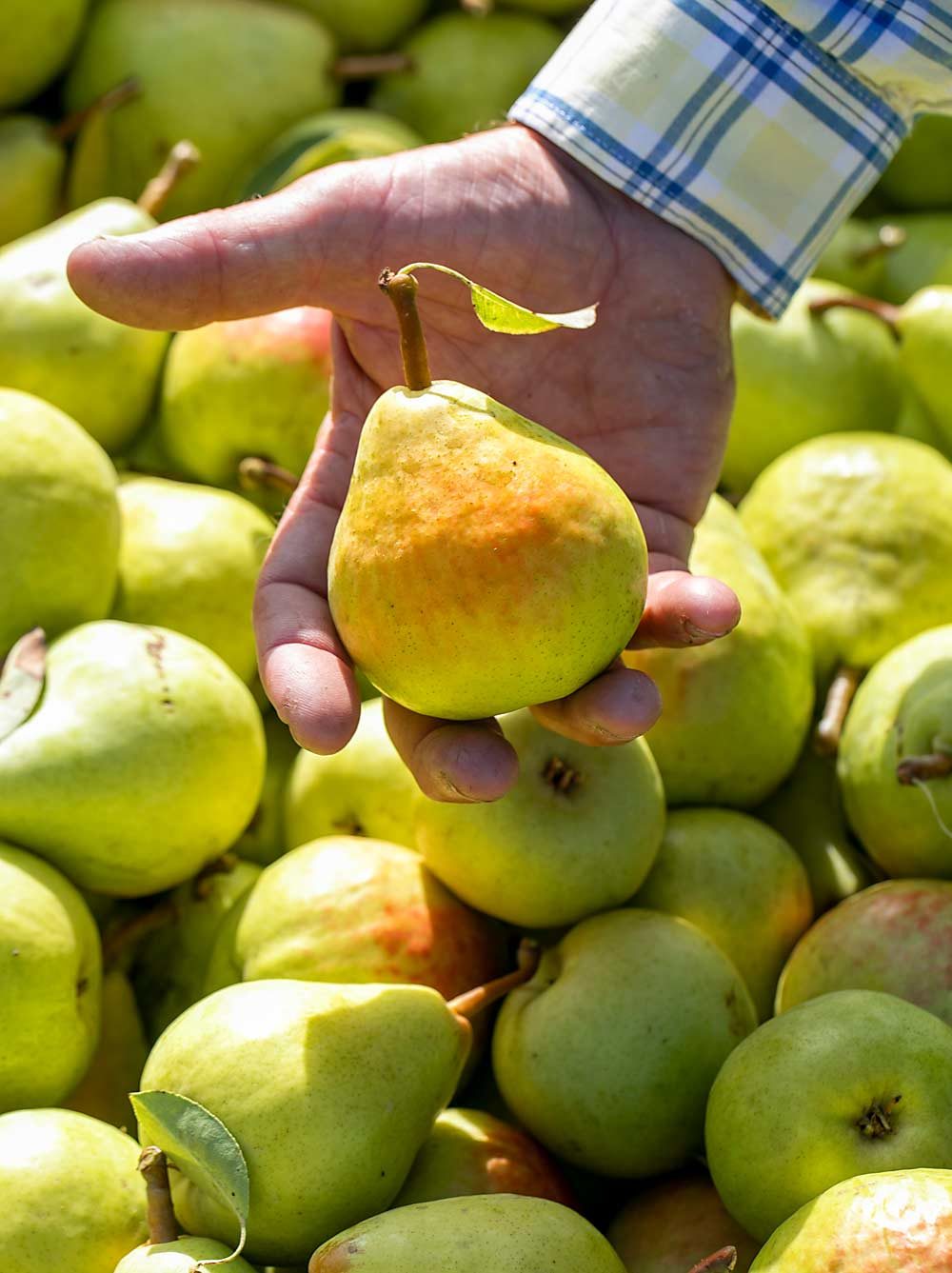
From a bin near Hood River, Oregon, Dwight Moe selects a pear, slices it and passes out samples. It’s juicy, crispy, sweet and most importantly, picked just minutes ago.
It’s called Gem, and Moe and his fellow orchardists at Diamond Fruit Growers hope its eat-ability right off the tree convinces shoppers to give pears a chance.
“That’s one of the beauties of that variety,” said Moe, one of a dozen or so growers who brought in the nation’s first commercial harvest of the blush variety, which was developed at the U.S. Department of Agriculture’s Kearneysville, West Virginia, breeding program to meet consumer preferences for fruit they can eat right away.
Actually, Gem poses a dual threat in the market. Yes, the pear is good right off the tree, but with storage it will soften into the creaminess that many consumers expect from a pear. The industry dubs it “buttery-juicy melting texture.” Meanwhile, it resists browning after being sliced.
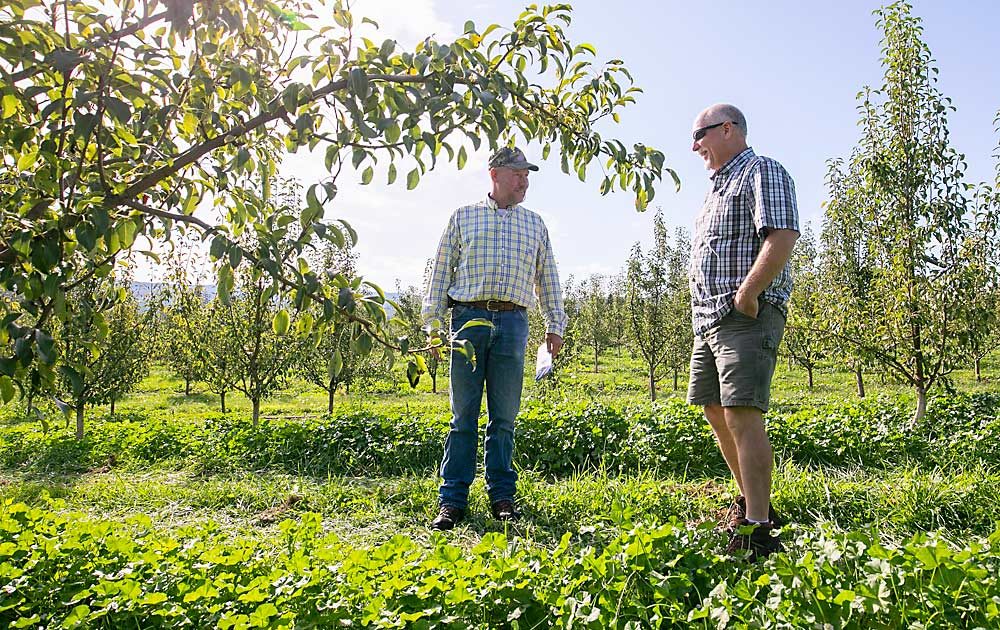
In September, Diamond Fruit had expected about 100 bins this year of Gem, said David Garcia, general manager of the cooperative. The catch may have been even larger if not for a hailstorm that month, which affected some of the later orchards.
The Hood River-based cooperative picked between 30 and 60 bins the past two years, enough to conduct some chilling trials. This year is the first they are trying to market the fruit.
Steve Moore, a field representative for Diamond Fruit, said the pear keeps well in cold storage for four to five months. In controlled-atmosphere trials with ethoxyquin treatments, it stored well until summer.
New pear varieties in the Pacific Northwest, where most of the country’s pears are grown, have been hard to come by. Some of the latest and greatest are club varieties out of New Zealand, while traditional Anjous and Bartletts have fallen on tough market conditions.
Gem, an open access variety, is a cross between Sheldon and a numbered variety with Comice, Bartlett and Seckel in its family tree.
The precocious cultivar is touted for lack of russeting, tolerance to fire blight and nonbrowning flesh, according to Todd Einhorn, a horticulture professor at Michigan State University. Bloom time coincides with Bartlett, and it’s compatible with Bosc, Anjou, Bartlett, Comice and Starkrimson. It shows some degree of self-fertility, Einhorn said, and produces a lot of fruit, which usually requires thinning, especially if growers want large pears.
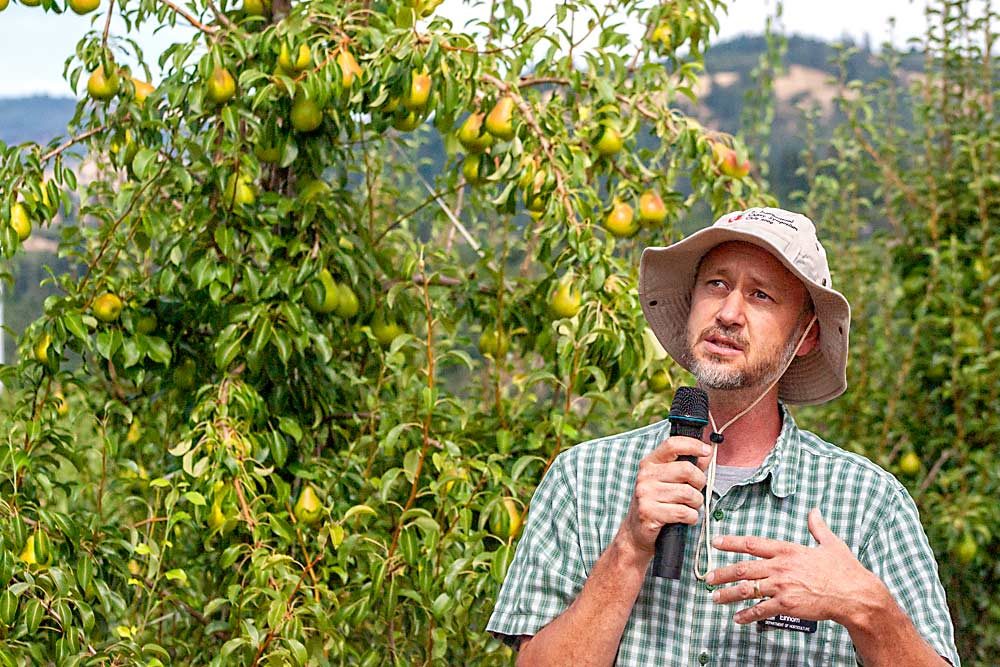
Einhorn formerly worked for Oregon State University and introduced Gem pears to the Northwest through his trials.
The variety is infected with pear vein yellows, a common pear virus, Einhorn said. Nurseries and growers can avoid spreading the virus by not grafting or budding. The virus is not transmitted by pollen and does not seem to be transmitted by insects, he said.
For pears, Gem trees are not too vigorous, possibly due to the virus, so two-leader or central leader training works well, Einhorn said. He recommends trellises so growers can establish blocks in high densities, emphasizing the need for narrow canopies. Sunlight exposure is critical to develop its red blush. Old Home by Farmingdale 87 is the suggested rootstock, depending on site.
“Good growers can make just about anything work,” he said.
Harvest timing
Finding the right harvest time may be a tricky balance. It was expected to pick near Anjou timing, but Diamond Fruit field reps recommended letting it hang a little longer for softer, larger and sweeter fruit.
Moe, a fourth-generation grower, harvested before the storm but later than he expected, on Sept. 11, 10 days later than his Anjous. Moore had urged him to let his pressure — an indication of maturity — drop to between 10.5 pounds and 11 pounds per square inch before picking, higher than the 10 to 10.5 range recommended as a maximum by Einhorn.
“I’ve been eating them for two weeks and it’s like, ‘When are they going to be ready?’ And they’re just wonderful,” Moe said on harvest day.
He opted for free-standing central-leader trees on OHxF 87 rootstocks planted at 10-foot spacing with 15-foot rows. In hindsight, he wishes he would have chosen 7-foot spacing with rows between 12 feet and 14 feet.
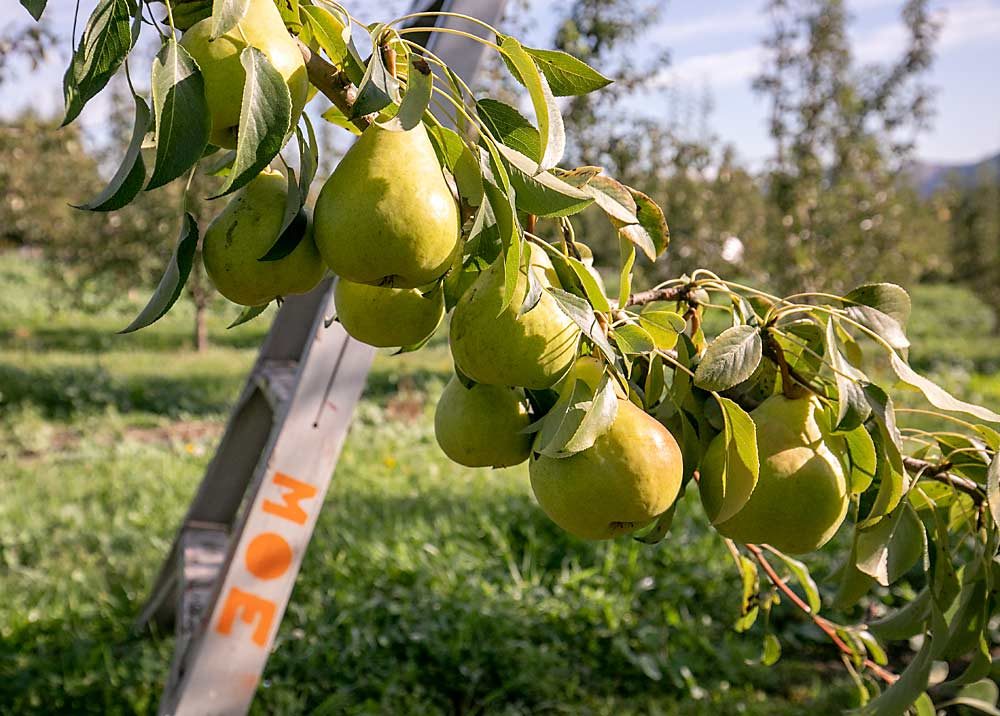
One thing he noticed is the branches seemed brittle, so he has his crews pushing crotch angles wide early in the season, to avoid snaps. He doesn’t dispute that the cultivar has some fire blight resistance, but he did lose a few Gems this year to blight. He also has heard of neighboring growers experimenting with summer pruning, but he hasn’t heard the results yet.
“We’re learning,” he said.
His family has a history of trying new varieties since his grandfather started the farm in 1905. Taylor’s Gold, Concorde, Seckel and several Asian pears were among the attempts.
“They just never made a hit,” he said. “I’m just hoping this Gem makes a hit.”
Scott Halliday, a Diamond Fruit grower located in a late section of the Hood River Valley, didn’t harvest this year because of hail, suspecting the lower pressure sought by the company left the pears more vulnerable.
Einhorn cautioned against a rigid conclusion, though. Hail can damage fruit any time during the season over a wide range of flesh firmness.
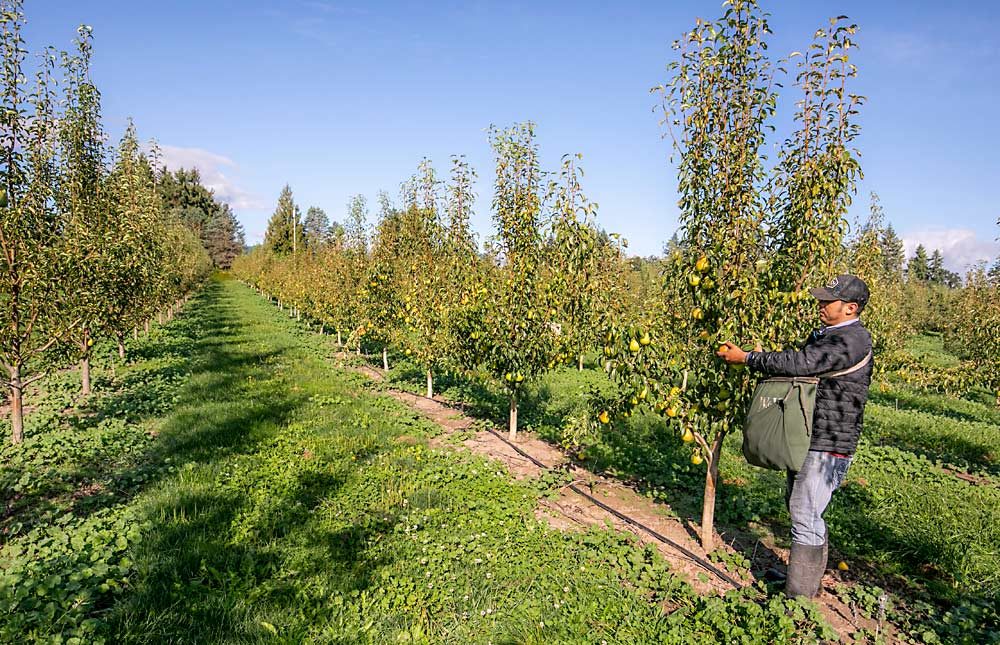
Halliday decided to trellis most of his 7-acre Gem block, training the trees to in-row dual leaders to slow down the variety’s apical dominance and make way for platform use someday. He left some free-standing central leaders as a comparison. He went with 8-foot tree spacing and 15-foot rows because of his available land, but if he plants more he will switch to 14 feet. For rootstocks, he used OHxF 97.
“Right now they grow well,” he said. “They put on a lot of fruit, so they need a lot of thinning.”
He was attracted to the double-edged marketing sword of Gem. He knows some shoppers prefer pears they can “eat with a spoon,” but younger shoppers are turned off by having to wait for pears to ripen.
“We just think there are too many consumers out there who don’t eat pears at all … we have to give them something that’s ready to eat,” Halliday said. •
—by Ross Courtney
Related:
—The quest for new varieties, cold-hardy rootstock
—Overcoming the pear plateau: Interpera 2017 (includes video)
—Pear industry ripe for a rescue






Leave A Comment